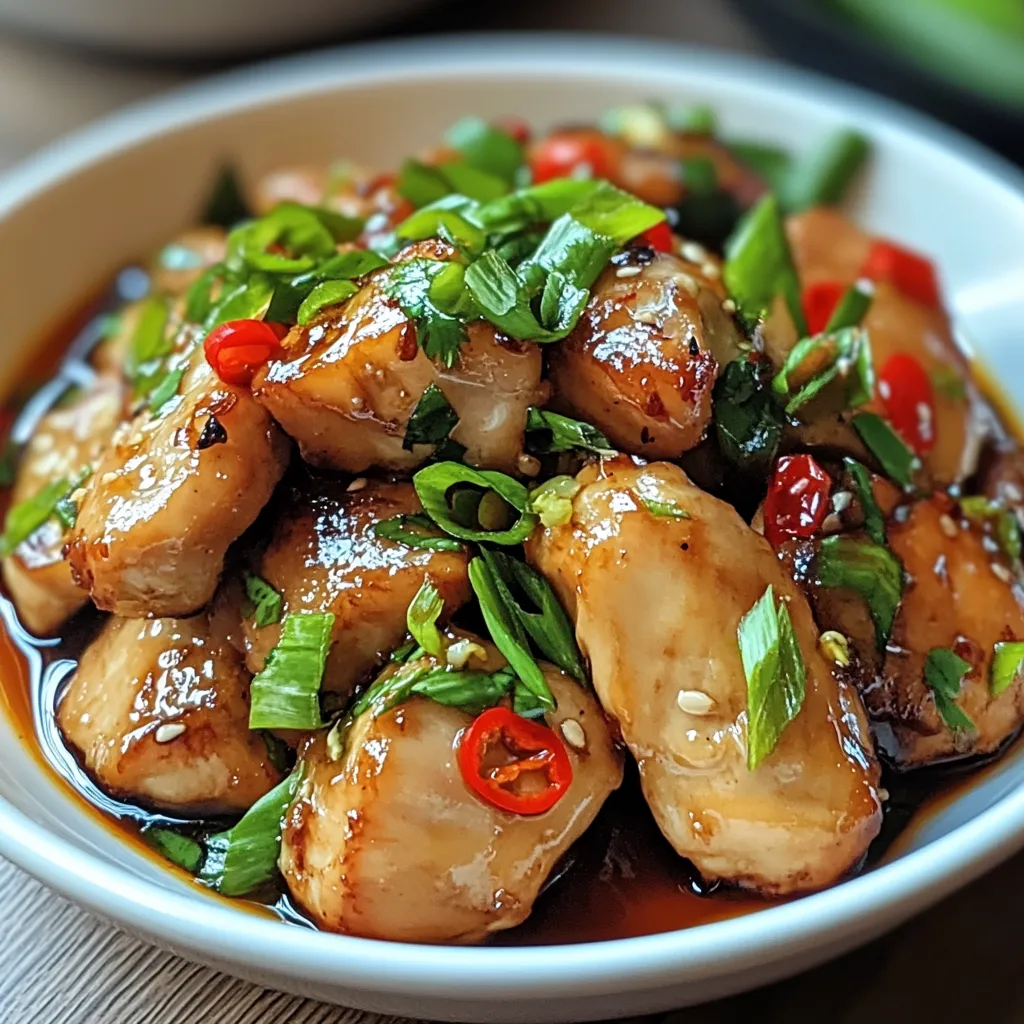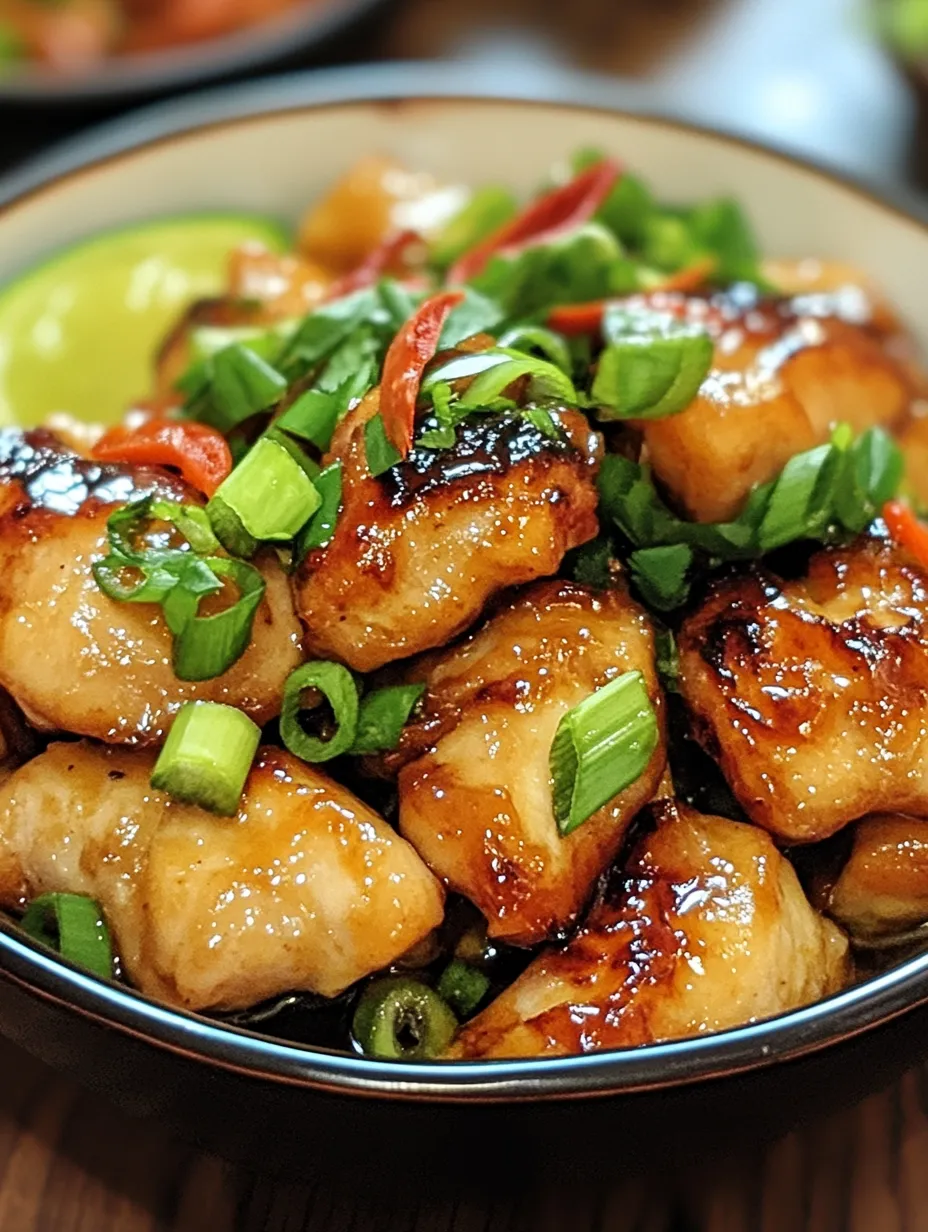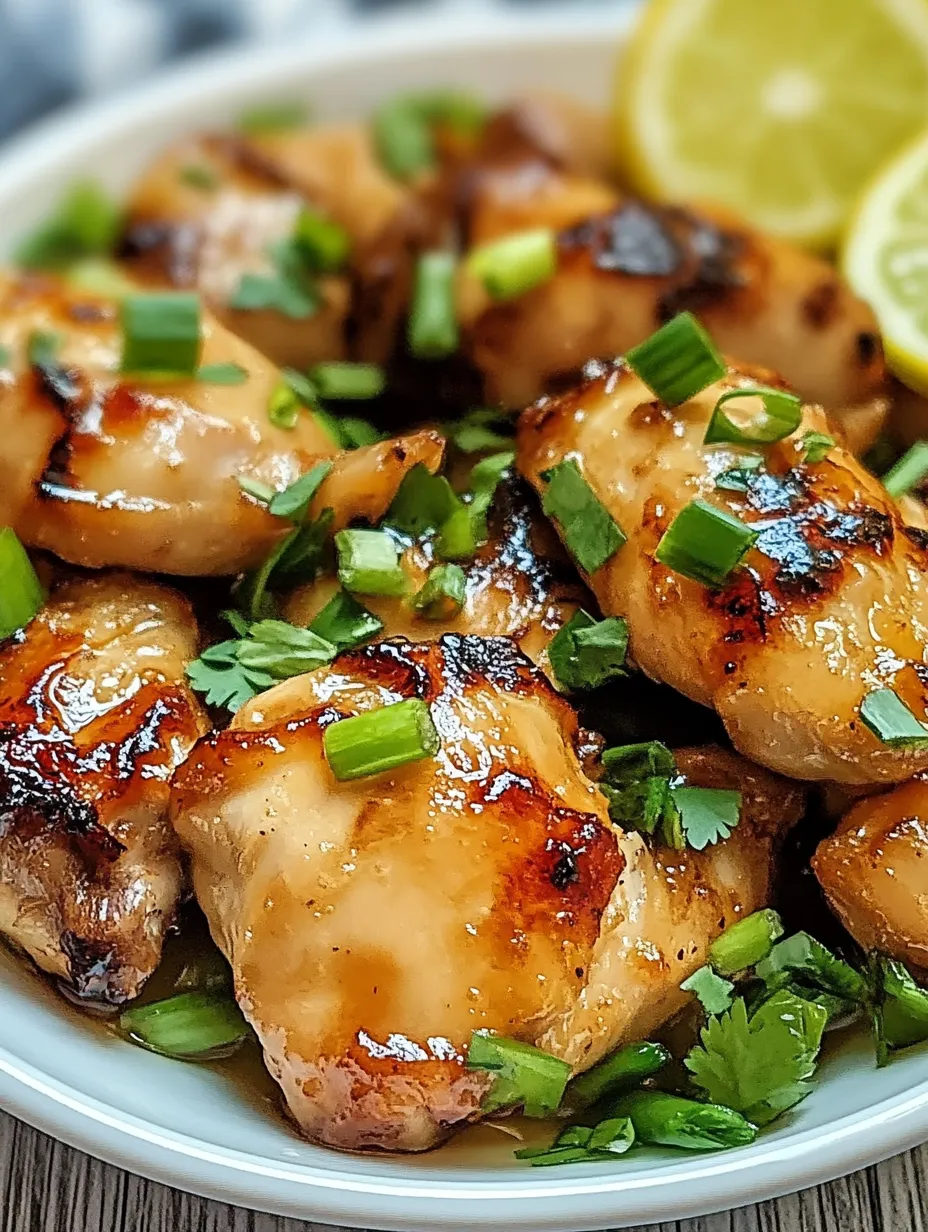 Pin
Pin
This vibrant Vietnamese dish combines aromatic lemongrass with savory chicken, creating a perfect balance of fresh and umami flavors.
Essential Ingredients:
- Fresh lemongrass - provides signature aroma
- Fish sauce - adds umami depth
- Garlic and ginger - create aromatic base
- Chicken thighs - stay juicy when cooked
- Quality honey - balances savory notes
Detailed Instructions:
- Perfect the Marinade
- Mince lemongrass finely
- Combine ingredients thoroughly
- Taste and adjust seasonings
- Ensure even coating on chicken
- Master the Cooking
- Preheat pan or grill properly
- Monitor heat to prevent burning
- Cook to proper temperature
- Allow proper resting time
- Achieve Ideal Texture
- Don't overcrowd cooking surface
- Turn chicken only once if possible
- Use tongs for gentle handling
- Test doneness carefully

Restaurant experience taught me that proper lemongrass preparation is crucial for flavor release.
Temperature Control:
Medium-high heat creates caramelization while keeping chicken juicy. Watch for burning of aromatics.
Marinade Balance:
The perfect ratio of fish sauce, soy sauce, and honey creates depth without overpowering.
This recipe captures authentic Vietnamese street food flavors while remaining approachable.
Mastering Lemongrass
Proper lemongrass preparation significantly impacts final flavor. Remove tough outer layers and slice only the tender white portion. Cut against the grain into thin rings, then mince finely or pound in mortar and pestle to release essential oils. Fresh lemongrass provides bright, citrusy notes that dried or paste versions can't match. The aromatic compounds are oil-soluble, so incorporating oil in the marinade helps extract maximum flavor.
Temperature Control
Managing heat ensures perfect caramelization without burning delicate aromatics. Start with a hot pan or grill to achieve initial sear, then reduce heat to medium to allow interior cooking. This technique creates a flavorful crust while maintaining juicy meat. Monitor closely as sugar content in marinade can cause quick burning.
Marinade Science
The combination of fish sauce, soy sauce, and honey creates layers of umami and sweetness. Fish sauce provides essential amino acids that enhance meat flavor, while soy sauce adds depth. Honey helps achieve caramelization and balances saltiness. Acid from lime juice tenderizes protein structure while adding brightness.

Regional Variations
Southern Vietnamese versions often include more chilies and sugar, while northern preparations might include additional aromatics like shallots. Central Vietnam's interpretation frequently incorporates extra fish sauce and less sweetness. Each region's adaptation reflects local ingredients and preferences while maintaining the dish's essential character.
Service Traditions
Traditional presentation includes rice, fresh herbs, and pickled vegetables. Serve family-style with communal rice bowl and individual portions of chicken. Provide extra lime wedges and chili sauce for customization. Fresh herbs like cilantro, mint, and Vietnamese coriander add bright notes and authenticity.
Storage Solutions
Store cooked chicken separately from garnishes. Reheat gently in covered pan with splash of water to prevent drying. Marinated uncooked chicken keeps well frozen for up to three months - portion before freezing for convenience. Always thaw in refrigerator to maintain food safety.

Chef's Final Notes
Success with Vietnamese lemongrass chicken depends on three critical elements: proper lemongrass preparation, marinade balance, and heat control. Always use fresh lemongrass, mincing it finely to release essential oils. Maintain medium-high heat for perfect caramelization without burning the aromatics.
- Pound aromatics to release flavors
- Marinate minimum 4 hours for best flavor penetration
- Allow meat to reach room temperature before cooking
- Rest 5-10 minutes before serving
This dish embodies the essence of Vietnamese cooking - fresh, aromatic, and balanced. Whether grilled or pan-fried, proper technique transforms simple ingredients into an authentic culinary experience.
Recipe FAQs
- → What's the best way to prepare lemongrass?
- Remove outer tough layers, use only the tender white bottom portion, and chop very finely or use a food processor.
- → Can I substitute lemongrass?
- While fresh is best, you can use lemongrass paste, or combine lemon zest and ginger as a last resort.
- → What can I serve with this?
- Steamed rice, pickled vegetables, or a fresh herb salad are traditional. Also great with rice noodles.
- → Can I make this less spicy?
- Yes! The chili flakes are optional. You can omit them completely or adjust the amount to your taste.
- → How long will leftovers keep?
- Store in an airtight container in the fridge for up to 3 days. Reheat gently to prevent drying.
